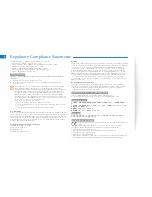
4.6 Bracketing
59
After you have taken the individual images, the image series must be post-
processed and combined into one single image. If you produced RAW im-
ages, you should develop them with a RAW developer (section 4.5.4). Even
if your HDR image composer is able to accept RAW files, a RAW developer
will give you superior results because of the corrections that can be applied
to lens and sensor imperfections. You should at least reduce the chromatic
aberration and the noise and apply a first sharpening to the images. Start
with the first image in the series—the “correctly” exposed image—and
then apply exactly the same development parameters to all of the images
in the series. Most RAW developers allow you to copy the development
parameters from one image and apply them to others. Of course, your tar-
get file format would be TIFF and not JPEG because TIFF is lossless.
Next comes the step of composition. HDR and DRI composers know two
techniques for composing HDR series:
f
Weighted average
. The pixel values of all images are added, but a weight
is applied to each pixel value. Pixel values of a dark pixel in an overex-
posed image get a higher weight, as do pixel values of a bright pixel in
an underexposed image.
f
Area oriented.
The picture is segmented into different brightness areas.
Each area is treated differently and may get its pixels from a different
source image. With this method, there is almost no blending of images.
Therefore, it is well suited for images with moving objects in the scene.
Ghosts are hardly possible because most pixels come from only one
source image.
After composition, DRI and HDR go separate ways. DRI immediately applies
tone mapping to reduce the tonal range of the image to a viewable and
printable size. It therefore can use standard file formats such as TIFF or
JPEG for the output.
HDR, in contrast, preserves the original dynamic range of the scene.
Therefore, it must use specialized file formats such as
OpenEXR, Radiance
HDR,
or
32-Bit-TIFF.
Traditional file formats with 8 or 16 bits per pixel and
channel cannot capture the high dynamic range of an HDR image. Once
you save the composed image into an HDR-specific file format, you can
open the file later and decide how to map the dynamic range of the image
onto a smaller printable or viewable dynamic range.
This brings up the technique of tone mapping: reducing the huge dy-
namic range of the composite image into something smaller. Again, there
are different methods to achieve this:
f
Global tone mapping
applies the same formula (in most cases, a logarith-
mic formula) onto each pixel. This is fast but can easily result in flat im-
ages. This technique is suitable for images with low or medium contrast.
f
Local tone mapping
takes the neighboring pixels into account. Bright-
ness differences between neighboring pixels are weighted higher than
Содержание Camera
Страница 1: ......
Страница 2: ...The Canon Camera Hackers Manual ...
Страница 3: ......
Страница 4: ...Berthold Daum The Canon Camera Hackers Manual Teach Your Camera New Tricks ...
Страница 19: ...10 CH APTER 2 Cameras and Operating Systems ...
Страница 25: ...16 CH APTER 3 ...
Страница 85: ...76 CH APTER 4 Teach Your Camera New Tricks ...
Страница 213: ...204 CH APTER 6 ...
Страница 253: ...244 AP PENDIX ...
















































